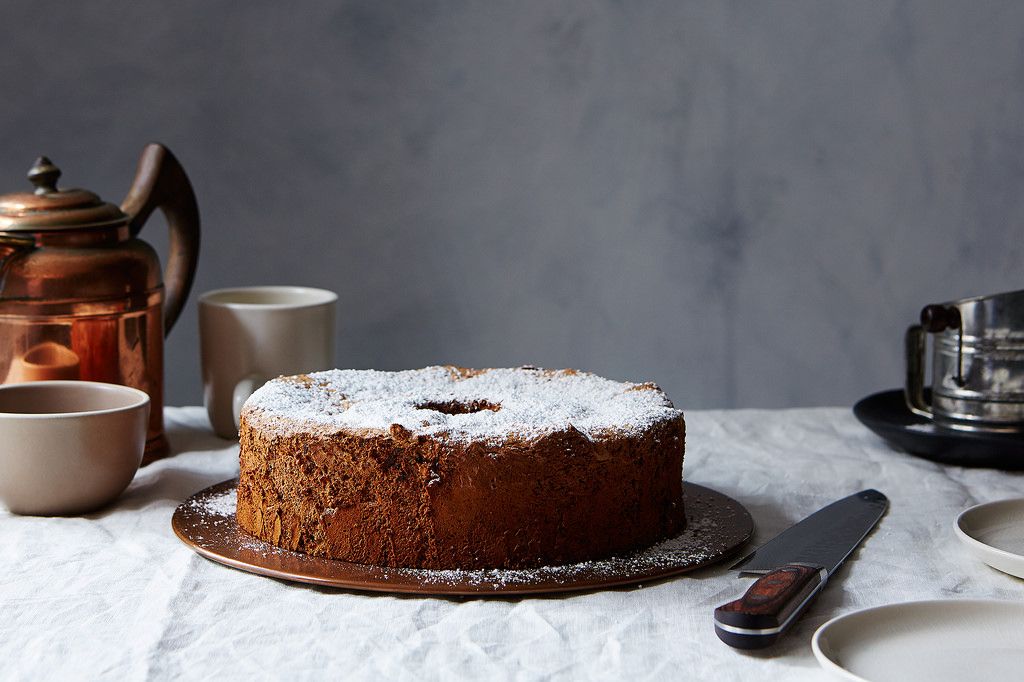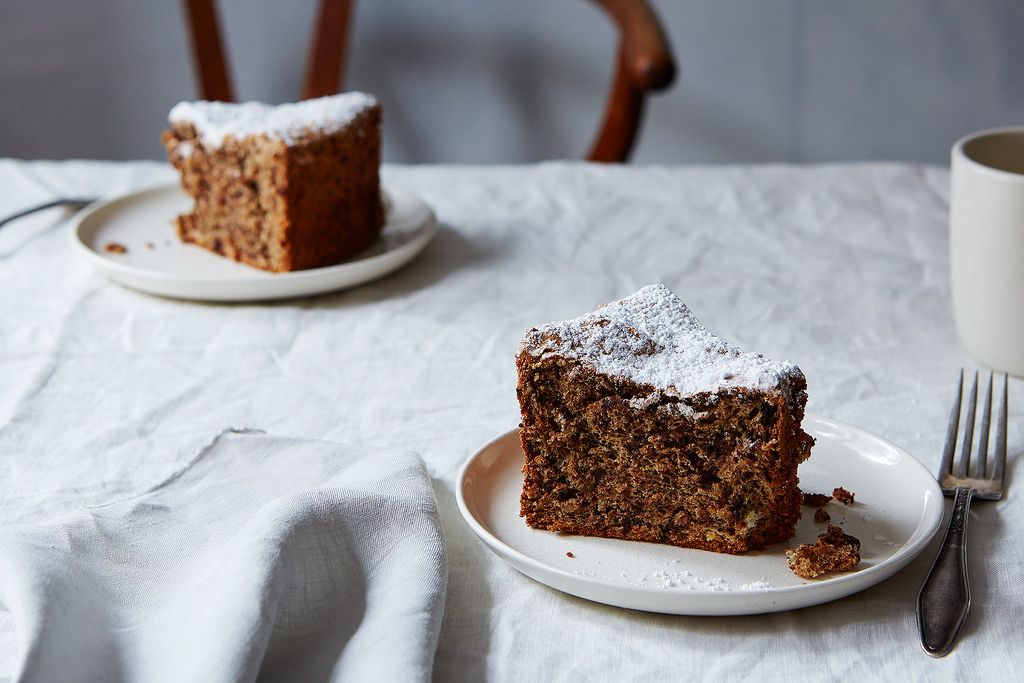Every week, baking expert Alice Medrich will be going rogue on Food52—with shortcuts, hacks, and game-changing recipes.
Today: There's no excuse for dry, dense, or styrofoam-esque Passover desserts. This is a cake you'll return to even when flour and leaveners are permitted.

Once upon a time, Passover desserts were either dry and spongy or moist but dense and heavy. This one breaks those traditions—without breaking any rules! It’s moist and light and rich and super flavorful. Instead of almonds, you can use walnuts, pecans, or toasted hazelnuts with the skins rubbed off. And yes, this one is too good to save just for Passover.
Passover Chocolate Nut Sponge Cake
Adapted from Chocolate Holidays (Artisan 2005)
Ingredients:
1 cup (140 grams) whole almonds, blanched or with skins
2 tablespoons (15 grams) matzo cake meal
2 tablespoons (15 grams) potato starch
2 teaspoons instant espresso or coffee powder
6 ounces 55 to 70% chocolate (or your preference), coarsely chopped
9 large eggs, separated, at room temperature
1 cup (200 grams) sugar, divided
1 bright-skinned, medium, unsprayed or organic orange
1/2 teaspoon cream of tartar, or 2 teaspoons white vinegar
Powdered sugar, for dusting
Lightly sweetened whipped cream, for serving
Equipment:
10-inch flat-bottom tube or angel food cake pan, preferably with a removable bottom, ungreased

Preheat the oven to 350° F. If the pan does not have a removable bottom, either line the bottom with parchment paper or grease it, then coat with matzo meal. If the pan does have a removable bottom, there's no need to do extra preparation.
Combine the almonds, cake meal, potato starch, coffee powder, and chocolate in the bowl of a food processor fitted with the steel blade. Pulse until most of the almonds are finely ground (it’s okay if some are a little coarser). Set aside.
In a large bowl, whisk the egg yolks with half of the sugar just until blended. Grate the zest of the orange into the bowl. Whisk until the mixture is very thick and pale yellow. Set aside.
In the bowl of an electric mixer, beat the egg whites and cream of tartar (or vinegar) on medium-high speed until the mixture is creamy white and holds a soft shape. Gradually beat in the remaining 1/2 cup of sugar on high speed until the egg whites are stiff but not dry. Scrape about 1/4 of the egg whites on top of the yolk mixture, and use a large rubber spatula to fold them in. Then, scrape half of the remaining egg whites and half of the dry ingredients into the large bowl with the yolks. Fold until they are almost blended. Add the rest of the egg whites and dry ingredients, folding just until blended.
Spoon the batter gently into the pan and smooth the surface. Bake 45 to 50 minutes, or until the cake springs back when lightly pressed and a toothpick inserted into the center comes out free of batter (though it may be coated with some melted chocolate).
Set the pan on a rack to cool for 5 minutes. Slide a slim knife or small metal spatula around the sides of the cake to detach it from the pan, pressing against the pan sides to avoid tearing the cake. Detach the cake from the tube with the knife or a metal skewer. Leave the cake to finish cooling right side up, in the pan, on the rack.
To unmold: If the pan sides are not removable, invert the cake onto a wire rack or a serving platter. Otherwise, pull upwards on the tube to lift the cake from the pan sides and slide the knife under the cake and around the tube to detach the bottom. Transfer the cake to a serving platter, right side or upside down, whichever you like. Dust a little powdered sugar over the top if desired, and serve with whipped cream.
 Pick up a copy of Alice's new book Flavor Flours, which includes nearly 125 recipes -- from Double Oatmeal Cookies to Buckwheat Gingerbread -- made with wheat flour alternatives like rice flour, oat flour, corn flour, sorghum flour, and teff (not only because they're gluten-free, but for an extra dimension of flavor, too).
Pick up a copy of Alice's new book Flavor Flours, which includes nearly 125 recipes -- from Double Oatmeal Cookies to Buckwheat Gingerbread -- made with wheat flour alternatives like rice flour, oat flour, corn flour, sorghum flour, and teff (not only because they're gluten-free, but for an extra dimension of flavor, too).
Photos by Mark Weinberg



See what other Food52 readers are saying.